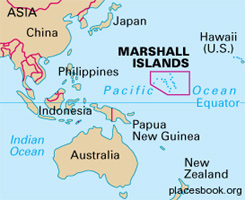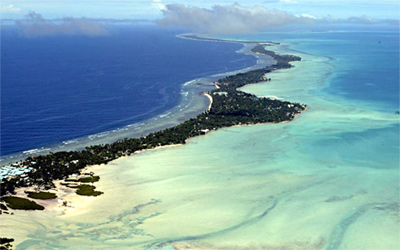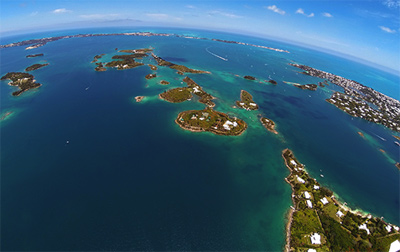In case you missed it, last week the Marshall Islands declared a national climate crisis ~
The Republic of the Marshall Islands, one of the lowest lying island nations in the world, has declared a national emergency over climate change.
Now most climate activists probably couldn’t even find the Marshall Islands on a map. (So when they disappear underwater they won’t even be missed. Just kidding!)
 The Republic of the Marshall Islands (RMI) has a Compact of Free Association (COFA) with the U.S., but has been a sovereign nation since 1986. The nation consists of 24 coral atolls, with a total of 1,156 individual islands and islets. The population is around 55,000. And President Heine says they’re all sinking ~
The Republic of the Marshall Islands (RMI) has a Compact of Free Association (COFA) with the U.S., but has been a sovereign nation since 1986. The nation consists of 24 coral atolls, with a total of 1,156 individual islands and islets. The population is around 55,000. And President Heine says they’re all sinking ~
The country’s president, Hilda Heine, tweeted the news Friday, blaming the international community for not acting quickly enough to mitigate global warming “of its own making.”

“Our parliament has officially declared a national climate crisis. As one of only four low-lying coral atoll nations in the world, the failure of the international community to adequately respond to the global climate crisis of its own making holds particularly grave consequences,” she tweeted.
Oh good grief. Maybe they’re running out of money – but they aren’t running out of land. Because, science. Nature has a way of rebuilding atoll islands, as Paul Kench, a geomorphologist (University of Auckland’s School of Environment in New Zealand) discovered a while back ~
Kench, who had been studying how atoll islands evolve over time, says he had assumed that a rising ocean would engulf the islands, which consist of sand perched on reefs. “That’s what everyone thought, and nobody questioned it,” he says. But when he scoured the literature, he could not find a single study to support that scenario.
What his studies showed instead was: “instead of eroding land, the waves would raise island elevation by depositing sand produced from broken coral, coralline algae, mollusks, and foraminifera. Kench notes that reefs can grow 10 to 15 millimeters a year—faster than the sea-level rise expected to occur later this century. “ As long as the reef is healthy and generates an abundant supply of sand, there’s no reason a reef island can’t grow and keep up,” he argues.

Remember, for example, that the Marshall Islands emerged on a reef 4800 to 4000 years ago, when sea levels were rising as fast as they are expected to rise over the next century.
Furthermore, this is from a 2009 U.K. Telegraph article ~
(I)f there is one scientist who knows more about sea levels than anyone else in the world it is the Swedish geologist and physicist Nils-Axel Mörner, formerly chairman of the INQUA International Commission on Sea Level Change. And the uncompromising verdict of Dr Mörner, who for 35 years has been using every known scientific method to study sea levels all over the globe, is that all this talk about the sea rising is nothing but a colossal scare story.
Despite fluctuations down as well as up, “the sea is not rising,” he says. “It hasn’t risen in 50 years.” If there is any rise this century it will “not be more than 10cm (four inches), with an uncertainty of plus or minus 10cm”. And quite apart from examining the hard evidence, he says, the elementary laws of physics (latent heat needed to melt ice) tell us that the apocalypse conjured up by Al Gore and Co could not possibly come about.
Even National Geographic isn’t sounding the alarms.
So remain calm. And follow the science.
~~~~~~~~~~~~~~
Related:
“We need support”: Pacific Islands Demand More Climate Action
New Science: 89% Of The Globe’s Islands – And 100% Of Large Islands – Have Stable Or Growing Coasts ~ (Jan. 2019) ~
Over the past decades, atoll islands exhibited no widespread sign of physical destabilization in the face of sea-level rise. 88.6% of islands were either stable or increased in area, while only 11.4% contracted. It is noteworthy that no island larger than 10 ha decreased in size. These results show that atoll and island areal stability is a global trend, whatever the rate of sea-level rise.
Tropical Pacific Islands Are Not Being Drowned By Rising Seas
Tidal Gauge Shows Marshall Islands Aren’t Being Drowned By Rising Sea Levels




